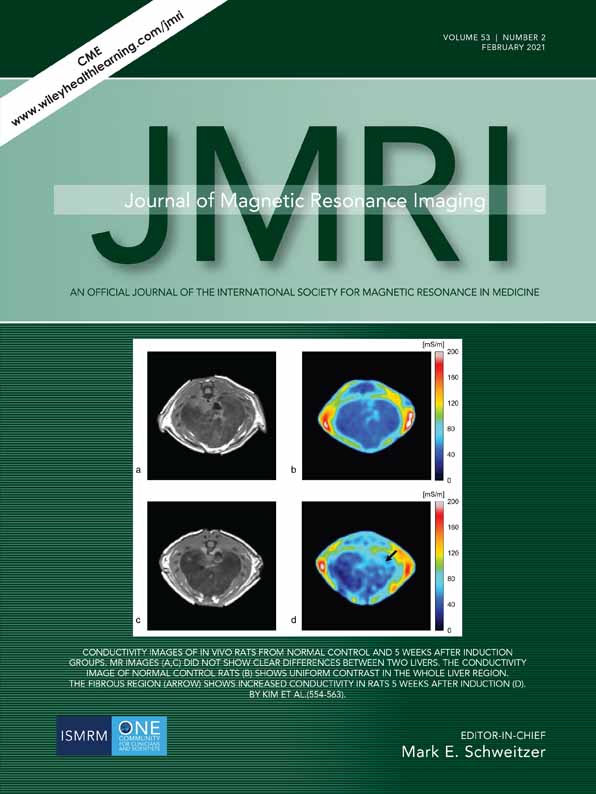Hemorrhagic Cysts and Other MR Biomarkers for Predicting Renal Dysfunction Progression in Autosomal Dominant Polycystic Kidney Disease
Contract grant sponsor: National Institutes of Health: National Center for Advancing Translational Sciences (NCATS).
Abstract
Background
Screening for rapidly progressing autosomal dominant polycystic kidney disease (ADPKD) is necessary for assigning and monitoring therapies. Height-adjusted total kidney volume (ht-TKV) is an accepted biomarker for clinical prognostication, but represents only a small fraction of information on abdominal MRI.
Purpose
To investigate the utility of other MR features of ADPKD to predict progression.
Study Type
Single-center retrospective.
Population
Longitudinal data from 186 ADPKD subjects with baseline serum creatinine, PKD gene testing, abdominal MRI measurements, and ≥2 follow-up serum creatinine were reviewed.
Field Strength/Sequence
1.5T, T2-weighted single-shot fast spin echo, T1-weighted 3D spoiled gradient echo (liver accelerated volume acquisition) and 2D cine velocity encoded gradient echo (phase contrast MRA).
Assessment
Ht-TKV, renal blood flow (RBF), number and fraction of renal and hepatic cysts, bright T1 hemorrhagic renal cysts, and liver and spleen volumes were independently assessed by three observers blinded to estimated glomerular filtration rate (eGFR) data.
Statistical Tests
Linear mixed-effect models were applied to predict eGFR over time using MRI features at baseline adjusted for confounders. Validation was performed in 158 patients who had follow-up MRI using receiver operator characteristic, sensitivity, and specificity.
Results
Hemorrhagic cysts, fraction of renal and hepatic cysts, height-adjusted liver and spleen volumes were significant independent predictors of future eGFR (final prediction model R2 = 0.88 P < 0.05). The number of hemorrhagic cysts significantly improved the prediction compared to ht-TKV in predicting future eGFR (area under the curve [AUC] = 0.94, 95% confidence interval [CI]: 0.9–0.94 vs. R2 = 0.9, 95% CI: 0.85–0.9, P = 0.045). For baseline eGFR ≥60 ml/min/1.73m2, sensitivity for predicting eGFR<45 ml/min/1.73m2 by ht-TKV alone was 29%. Sensitivity increased to 72% with all MRI variables in the model (P < 0.05 = 0.019), whereas specificity was unchanged, 100% vs. 99%.
Data Conclusion
Combining multiple MR features including hemorrhagic renal cysts, renal cyst fraction, liver and spleen volume, hepatic cyst fraction, and renal blood flow enhanced sensitivity for predicting eGFR decline in ADPKD compared to the standard model including only ht-TKV.
Level of Evidence 2
Technical Efficacy Stage 2
J. MAGN. RESON. IMAGING 2021;53:564–576.




